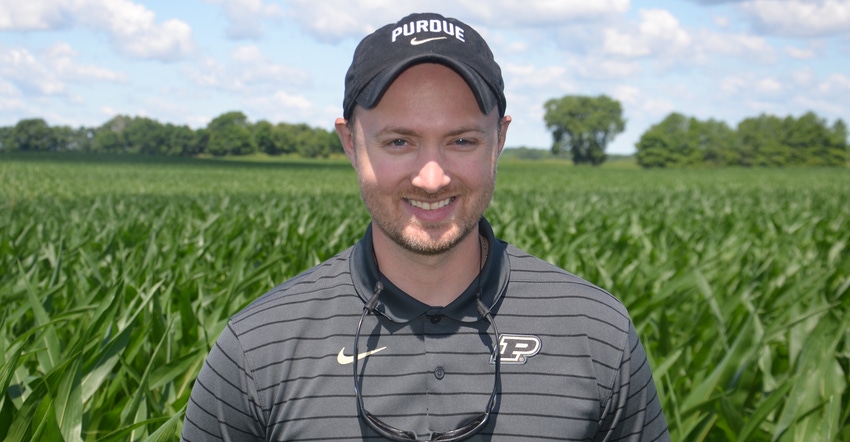
The same Extension corn specialist has fielded questions from farmers in Indiana and surrounding states for 40 years. Bob Nielsen is still on staff part time at Purdue University, concentrating on field research projects, but this year, he turned over the reins for everyday support of farmers to Dan Quinn, who comes to Purdue most recently from the University of Kentucky.
Nielsen is well known across the Corn Belt for his Chat ‘n Chew Café website. Quinn has set up his own website, listed below, with links to Nielsen’s archived articles. The following interview is your chance to meet Quinn. Expect to hear a lot from him as he begins to make his mark on Indiana and eastern Corn Belt agriculture.
Tell us why you decided to work in agriculture, and in agronomy specifically. I grew up near Portland, Mich., which is between Grand Rapids and Lansing.
I worked on several farms growing up, and always was interested in agriculture. After high school, I spent three years at a community college before transferring to Michigan State in agronomy to get my Bachelor of Science degree.
How did you end up in Indiana as the next Purdue Extension corn specialist? I became more interested in agronomy while working on the MSU farm and doing research projects. I also learned a lot about Extension there, working with outstanding specialists.
Once I finished my master’s at MSU, I was fortunate to work on a doctorate with Chad Lee at the University of Kentucky. He has 20 years of experience as an Extension corn specialist and is Kentucky’s counterpart to Bob Nielsen. There is lots of no-till and cover crops in Kentucky, and my work there included working with cereal rye and no-till corn.
When asked to interview at Purdue, I looked at it as a great opportunity. I feel very fortunate to be here in this position.
What have you learned about cover crops that can help growers here? They can have several benefits. However, if you’re going to sow cereal rye and follow with corn, pay attention to three things. First, be ready to terminate the rye in a timely manner in the spring. Second, apply a healthy amount of nitrogen starter fertilizer at planting, probably 40 to 50 pounds of actual N. That supplies nitrogen for corn until it’s released from residue later in the season. Finally, come back with a split application of nitrogen rather than applying everything at once. You can add crimson clover with cereal rye before corn. It reduces the carbon-to-nitrogen ratio and tends to reduce the effects seen from tying up so much nitrogen in residue.
What kind of research do you expect to do? Nielsen and Jim Camberato, Purdue Extension soil fertility specialist, have done a lot of field-scale research. I intend to continue that, both with farmers and at the Purdue ag centers. I will likely work in some large-scale field trials with cover crops. If interested, email me at [email protected].
Where can people find more information from you and others? Visit thekernel.info. I am carrying on Bob’s internet tradition through this site. You can find information on weather, markets, crop-related articles from other universities, the latest crops information and links to Nielsen’s archives of helpful articles.
About the Author(s)
You May Also Like




